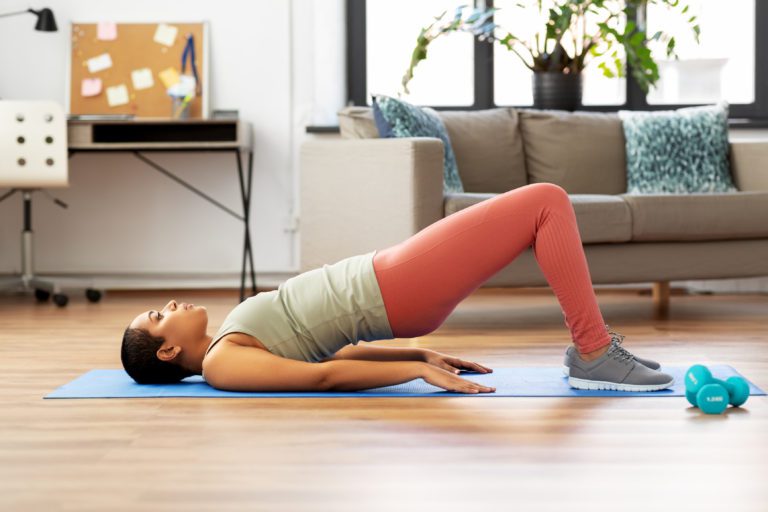Maintaining your pelvic floor and perineal health during pregnancy is so important as you prepare to give birth. Putting in the time now to strengthen your pelvic floor can help shorten the amount of time you spend pushing during labor, and even prevent urinary incontinence (which is far too common after childbirth). Adding a few simple stretches and massage techniques to your daily routine in the third trimester can help prevent perineal and vaginal pain, episiotomy, tearing, and scarring. It’s worth the work—so let’s get started!
Pelvic Floor Exercises
The pelvic floor is the base of a group of muscles called your core. These muscles are in your pelvis and stretch like a hammock from your pubic bone (in the front) to your tailbone (in the back), and from side to side. Pelvic floor muscles support the bladder, bowel, and uterus in women. They help maintain bladder and bowel control and play an important role in sexual sensation and function. Your vagina is designed to stretch and accommodate your baby during childbirth. We recommend starting daily pelvic floor exercises right away in the second trimester, and starting them again once you’re cleared to resume exercise in the postpartum period.
Squeeze the muscles around your vagina as if you are stopping the flow of urine; hold for ten seconds, breathing normally, then slowly release. Do 20 reps five times a day. Pelvic floor holds Sit or lie down in a comfortable position. Slowly draw up through your pelvic floor muscles and hold the contraction for five seconds. Then slowly relax, and rest for five seconds. Repeat 10 times. Remember to breathe!
Basic Hip Twist
Lie on your back with your knees bent and your feet shoulder-width apart. With your hips into a neutral position, draw in your pelvic floor muscles and engage your core. Rest your fingertips on your hip bones and gently lift one knee out to the side – but only by a few centimeters. If you lift your hip too far, your hip bones will push into your hands, so watch out for that sensation and bring your hip back. Repeat 10 times on each leg.
Coffee Table Lift
Get onto all fours with your hands shoulder-width apart and your knees hip-width apart. Make sure your hips are in a neutral position and your back is flat. Curl your toes under. Breathe in, and then breathe out, drawing in your tummy and pelvic floor muscles, and then lift your knees off the floor. As you breathe in, lower your knees back down. Repeat ten times.
Perineal Massage
Your perineum is the pelvic floor tissue between your vagina and rectum. Iis slightly elastic, but can sometimes tear during birth–and we want to help prevent that!
We recommend beginning a routine of perineal massage at around 34 weeks, and continuing until you go into labor. You can start off slowly, performing this technique once to twice a week at first, and then work your way up to daily massage. Remember to keep the massage gentle; if the massage is too forceful it can cause swelling, irritation, discomfort, and pain.
- Wash your hands with soap and water. Be sure your nails are short.
- Find a comfortable position that allows you to reach your perineum, either by reaching your hands in front of you or behind you. You might feel comfortable sitting propped up in bed with your knees bent, or you may prefer raising one leg in the shower or on the toilet. If you decide to stand, make sure to change positions if you become tired or uncomfortable.
- Apply a couple of drops of a natural oil, like organic sunflower, grapeseed, coconut, almond, or olive oil, to your thumb and perineum. Personal lubricants like K-Y Jelly are also good.
- Insert your thumb into your vagina approximately 1-2 inches.
- Apply gentle pressure in your vagina downwards toward your rectum.
- Maintain the pressure as you move your thumb from back and forth in a U shape (from about 3 to 9 o’clock if you can imagine the face of a clock).
- You should feel a stretch and a bit of stinging or burning but it should never be painful.
Continue massaging for three to five minutes as tolerated. As always, remember to check with your own healthcare provider before starting any new exercise routine in pregnancy. And happy pushing!
YOU MAY ALSO LIKE: Boost Your Postpartum Nutrition






Comments are closed.